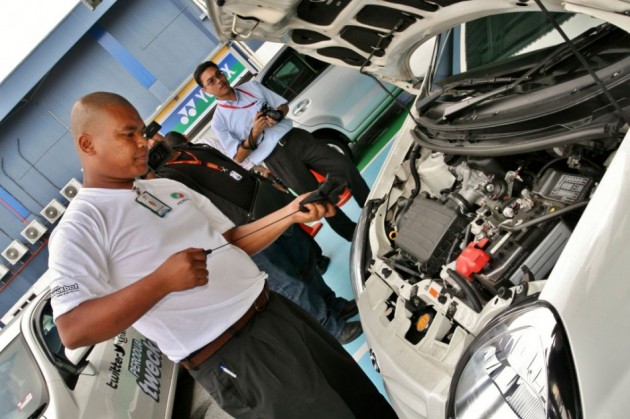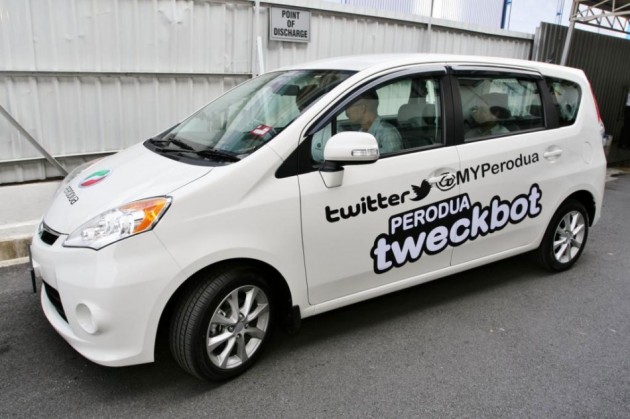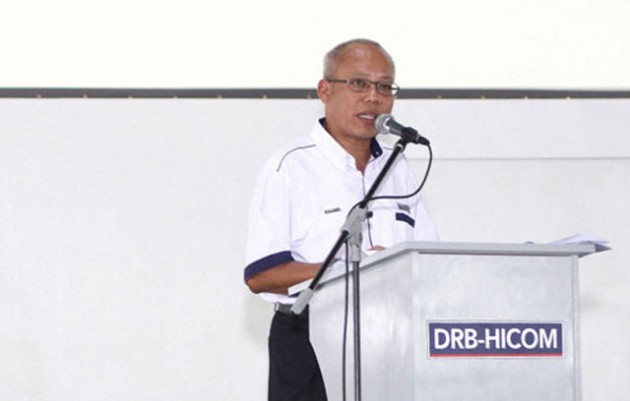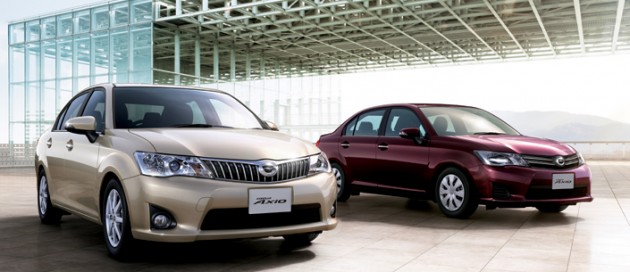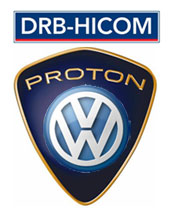
Proton's 4,000 acres Tanjung Malim plant
Within the region, Malaysia has the longest experience in the automotive industry. The first car plant in South East Asia was completed in 1941, in Bukit Timah, Singapore by Ford Malaya. Of course, back then Singapore was still part of Malaysia, or to be specific, Malaya. Thailand would only start assembling cars in 1961 (Siam Motors and Nissan Co Ltd.). By then Malaysia already had about 20 years of experience under our belt.
The 1983 National Car Policy, coupled with sterling economic growth established Malaysia’s as ASEAN’s largest car producer. The Malaysian car industry hummed along pretty well until the new millennia came. Thaksin Shinawatra became the prime minister in 2001 and swiftly formulated Thailand’s master plan for industrial development.
Within this bigger plan was Thaksin’s “Detroit of Asia” vision. Thailand’s Ministry of Industry released a 300-page document titled “Automotive Master Plan 2002 -2006,” and 60 percent of its content focused on implementation.
By 2003, Thailand overtook Malaysia as the top vehicle producer in the region. Malaysian ministers never quite knew what hit them.
When quizzed about the fall in our relative competitiveness, our ministers’ typical answer would be something like “Thailand’s assembly-based model of building other people’s cars is different from Malaysia, who posses full scale vehicle design capability.”
It was a fair answer, until we learn that Thailand is one of the six countries in the world to house Toyota’s global R&D operations, and one of eight country hosts to Bridgestone’s Proving Ground for tyre development. Companies like Isuzu no longer operates any development work for pick-up trucks in Japan, and has since transferred all design and engineering work for the D-Max to Thailand. So it is not entirely true that all the Thais do is just screwing together other people’s cars.

Isuzu D-Max - Engineered, designed and built in Thailand.
Plus, in a globalized world, no one single country handles end-end vehicle development work exclusively anymore. The Chevrolet Camaro, an iconic American car uses a platform designed by Australian engineers at Holden. Austria does not have any car companies but Magna-Steyr developed the folding hard-top for the Mercedes-Benz SLK. The Chevrolet Cruze had its developed work spread across South Korea, China and Germany.
And to further emphasize how globalized vehicle development has become, the Ford Mustang, the most American of all American cars, is designed by a Vietnamese American, Hau Thai-Tang. The Chevrolet Camaro is designed a Korean, Sang Yup Lee. A Chinese woman by the name of Wulin Gawao heads GM China Design studio and designed the Buick LaCrosse sold in USA. It's all about the best man or woman for the job. There was no talk about only an American can design an American car.

Wulin Gawao, Design Director of GM China Advanced Studio

SangYup Lee - Camaro's designer, current Chief of Exterior Design for VW

Hau Thai-Tang, Chief Engineer, Ford Mustang
The 2006 National Automotive Policy (NAP) was our government’s attempt to stem the decline. But the vaguely worded document, lacking both in implementation details and quantifiable targets (Table 2), created more questions than answers.
Compare Thailand master plan's well defined and quantified targets, with our vaguely worded original NAP document.

The Malaysian decline continued. By 2008, Indonesia’s vehicle production overtook Malaysia’s.
Indonesia is now the largest overseas market for Daihatsu while Toyota designated Indonesia as its regional manufacturing base for the Innova MPV, Fortuner SUV, and built Hino’s largest plant outside Japan in this country.
The 2009 NAP review did little to improve things. Spanning around 10 pages long, NAP 2009 ended with "MITI will coordinate with the relevant ministries and government agencies on the follow-up actions for the implementation of the NAP Review.” Endings like these suggests a poorly thought through policy.
A look at Table 4 suggests a not very flattering view of our NAP.
Productions of many critical hybrid vehicle components are still overly concentrated in Japan. Thailand makes the Prius and Camry Hybrid and while Taiwan recently started production of the new generation
Camry Hybrid in Kuanying. A different version of the Toyota Camry Hybrid is also assembled in Australia.
Both the Australian and Thai governments provided huge funding support. The Australians provided a A$35 million (RM111.6 million) Australian Green Car Innovation Fund, while in Thailand, Japanese hybrid CKD packs are imported tax-free under the Japan-Thailand FTA in addition to lower excise duty rate (10 per cent instead of the usual 35 per cent).
Malaysia's excise and
import duties exemption for hybrid vehicles expires by December-31 2013, with the assumption that some form of electrified powertrain Proton model will be launched by then.
In short, whatever Malaysia is offering, the Thai government will certainly match it. With so much investment already made in Thailand, manufacturers see no reason to repeat the tedious process of building a new production line or retooling the plants in another country.
In Malaysia, where fuel prices continue to be subsidised, hybrid cars are more of a novelty. How many hybrids can our market sell? Between January 2009 to December 2011, only 9002 hybrids were registered.
Such numbers don’t justify investments in factory tooling and jigs for local assembly. The additional price premium of hybrid cars can only be justified with fuel prices of around RM3 or RM4 per litre, as in the case of Thailand.
In other markets like Japan or Europe, fuel prices go up to RM6 per litre. So hybrids make perfect sense. Malaysia's inability to attract investments in green technology is a clear downside of fuel subsidy. It distorts the value of a diminishing commodity and removes any incentive to invest in more efficient green technology.
Part of Malaysia’s GTP is to transform the country into a high income economy. Hence NAP’s push to produce high value added components. Daihatsu’s decision to relocate production of its four-speed E-AT from Japan to Malaysia (Perodua) is commendable.
But in the greater scheme of things, it’s nothing to shout about, lest we fall into the jaguh kampung mentality. Japan is dominated by fuel efficient and modern CVTs (45 percent market share). Conventional four-speed automatics are dropping out of favour. The main users of Daihatsu’s four-speed automatics is not Japan, but Indonesia, for its low cost Daihatsu Xenia and its rebadged cousin, the Toyota Avanza, as well as Malaysia's Perodua’s models.
So it makes sense for Daihatsu’s Japanese plant to concentrate on the higher value CVTs. In transmission trend, four-speed automatics are like a cassette player in a MP3 iPod generation. Yes it still works, but it’s not something you want to show off.
In 2009, ZF Friedrichshafen AG, a Tier-1 transmission specialist and maker of Porsche’s famous PDK transmission, invested 20 million Euros in its Shanghai R&D centre, one of ZF’s eight in the world.
Meanwhile in Singapore, Continental, one of the world’s largest automotive parts supplier invested 21 million Euros in its new R&D facility. The seven-storey 10,170 sqm facility specialises in developing automotive electronics. Bosch also runs a similar R&D facility in Singapore.
BMW has design studios in both Shanghai and Singapore. Think tiny Singapore has no place in the automotive industry? Or that China is merely a low cost factory for the world? Think again.
Realising that by 2015, 40 percent of a car’s cost will be from electronics, Singapore is moving very fast to capitalise on its existing talent.
In 2008, the Singapore Agency for Science, Technology and Research (A*STAR) launched the A*CAR Consortium to develop next generation driver assistance system. On electric vehicles (EVs), the Singaporean government is partnering with car-makers Mitsubishi and Renault-Nissan, outdoor charging facilities provider Bosch, indoor charging facilities provider Greenlots (homegrown Singaporean company) and mobile user interface provider Singtel, to testbed EVs.
Every detail is being looked into – including charging facilities, safety, compatibility with HDB flats, charging rates, user interface (status checking via mobile Internet). Results and data gathered from the test will guide Singapore’s rollout of EV support infrastructure.

A Singaporean Mitsubishi i-MiEV (with Research-Development plates) demonstrating indoor charging solutions provided by Singaporean EV charging solutions provider Green Lots

Certain malls like the Somerset Shopping Mall in Singapore provide priority parking for alternative energy cars

Demonstration by outdoor charging infrastructure provider Bosch, on a Mitsubishi i-MiEV
EV is mentioned in our NAP, but so far, there is very little tangible result. The only party that has shown results is Proton’s EV prototypes. But without a supportive eco-system, the project is bound to flounder.
Malaysia is in the middle of Thailand, Indonesia, Singapore and China, not just physically, but also figuratively. We are stuck in the dead middle, too expensive for manufacturing jobs dominated by Thailand and Indonesia, while the same time lacking the intellectual base for higher value jobs.
On Malaysian car brands, the bigger question everyone should ask is whether a national car brand is still realistic. It’s a hard question that needs to be answered objectively, with data and facts, not ideological rhetoric.
The general rule of thumb for car companies is that you need to sell at least one million cars a year to remain profitable. However, most car companies think the figure is significantly higher now with more stringent safety, environmental regulations and high fuel prices requiring massive investment in R&D for new powertrain and body development. This is why joint collaborations are so common now.
BMW is the smallest of all mainstream luxury car maker and needs to sell 1.8 million cars a year to remain afloat, and this is a high margin luxury end of the market. The CEO of Fiat, Sergio Marchionne reckons the realistic figure is now five million cars, with space for only six mainstream automotive manufacturers.
Even South Korea’s large 48 million population can only support one car maker (Hyundai-Kia group). Samsung Motors and Daewoo now belong to Renault-Nissan and GM respectively. So against this reality, where does the Malaysian car fit?
Sweden, with its small population of nine million cannot sustain its Volvo and Saab cars. Australia’s 22 million population is struggling to keep its domestic car industry alive.
Thailand has 67 million people. It registers around 800,000 cars a year and is able to sustain a viable domestic manufacturing base, making it an ideal regional base for car makers.
The Malaysian car market size is around 600,000 vehicles a year. With the right condition Malaysia may be able to push it to 650,000 cars but any higher is not likely.
Car plants need very high output volume to be viable. And car makers build them closest to where most of their cars are sold and export the remaining.
So countries with a large domestic market always have the upper hand. Dangling tax breaks alone won’t convince car makers to build their cars in a country because it’s simply not economical.
Contrary to popular opinion, foreign car companies are not upset with Malaysian protectionist policies. They are quite used to it. Even in the supposedly free market US, imported pick-up trucks into America are slapped with a 25 percent duty levy.
In Japan, certain regulations are designed in such a way to give advantage to Japanese manufacturers. Japan’s JC-08 fuel economy test cycle is designed to favour Japanese engines. Something is clearly wrong when a hulking Toyota Alphard Hybrid qualifies for green tax rebate while a VW Golf TSI, one of the most fuel efficient cars in the world, doesn’t.
Until recently, South Korea subjected owners of foreign cars to income tax audits and specifies the maximum size of a foreign car showroom. Even duration of a TV commercial hours by foreign car companies are regulated.
Car companies are used to local idiosyncrasies and will adjust their plan accordingly. What annoy them most is not protectionism but flip-flop policies, which is akin to renegading on promises made. BMW Malaysia took NAP’s word that EU4M diesels will be introduced in 2011 and went ahead to launch four clean diesel models. To date, there is still no news of EU4M diesel.
The AP issue is another sore point. In 2006 government said APs will be abolished by 2010. This has since been pushed back to 2015.
The root of Malaysia's problem is firstly lack of political will and secondly, lack of clear direction. What’s the long term plan for Proton? So Perodua has a partnership with Daihatsu. What is supposed to come out of this? By when?
What is it that Daihatsu can do for us that requires us to cordon off a market for them, that we cannot achieve by opening up the market to more players? B-segment vehicles are seeing the most active innovations now. Ford Fiesta and VW Polo are the best examples.
Yet, Malaysians are denied access to affordable world class small cars because our policy is based upon throwing exclusive support to only one manufacturer.
When China was developing its auto industry, it cunningly pit all foreign car makers including VW, GM, Jeep, Daimler against each other to China’s advantage, dangling a 300,000 car a year manufacturing contract as the ultimate prize.
Of course, it would not be fair to compare against China. But the point here is that clearly we weren’t very good at negotiating for the long term and protecting our own interest. Until we set a clear direction and summon enough political will to push things through, our industry will continue to flounder and remain in a state of flux.
